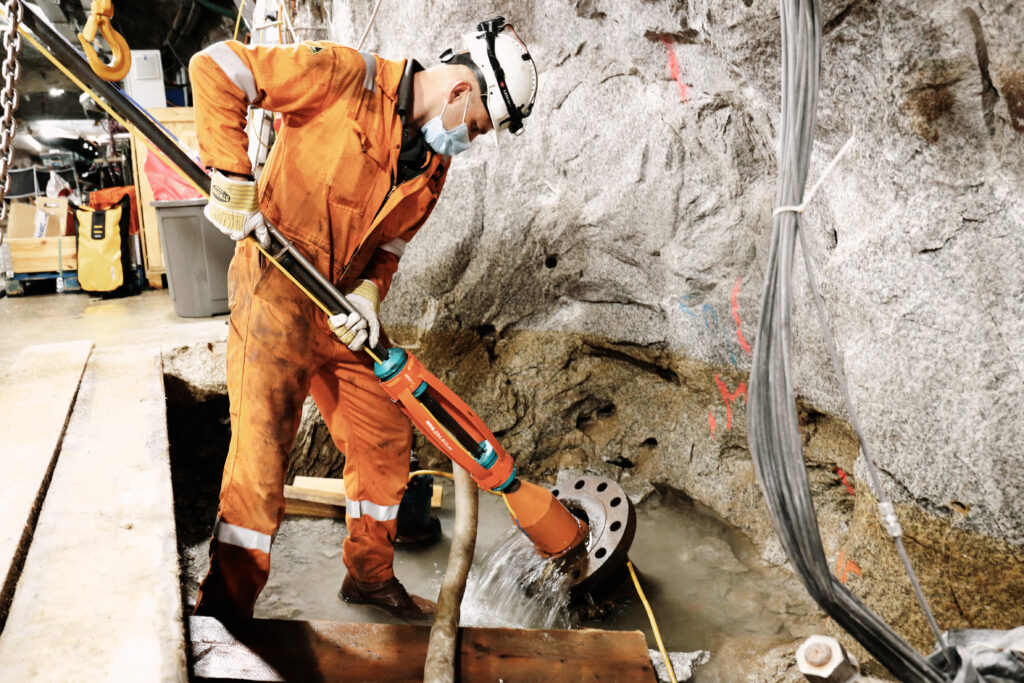Geoenergy
It’s everywhere under our feet, we just have to get there!
Geothermal energy has the potential to provide a significant fraction of low to medium temperature heat for buildings and industry. Seismic sensors are inserted into a 300 meter long borehole in the Bedretto Underground Laboratory for Geosciences and Geoenergies, a joint center of ETH Zurich’s Department of Earth Science. This allows to develop and validate procedures to exploit deep geothermal energy while reducing the risk of induced seismicity.
Modern societies use huge amounts of energy – we all know that by now. But hold on tight: On a planetary scale, we are energy ants. The interior of the Earth holds 10^31 Joules (3 x 10^15 TWh) of energy! That’s over 10 billion times our total annual energy consumption! 20 percent of that energy is an ancient relic, dating back to the collisions that formed our planet. The other 80 percent are the result of radioactive decay deep down in the Earth’s core.
All that stored energy is of a specific type: thermal energy. In particular, the Earth’s temperature increases by 25-30deg for every kilometre you descend. So, if you drill down 200m, let’s say, you’ll have a temperature increase of roughly 5deg. How can we make use of this?
Somewhere in your mind, the word “heat pump” has perhaps already made a flash appearance. In 2022, 18.5% of Swiss households were heated using heat pumps, as compared to roughly 39.3% with oil and 17.5% with gas. Those 18.5% include both air source as well as ground source heat pumps. As the name says, they draw heat either from the surrounding air or from the ground, which is then transferred to a liquid such as water that is pumped around your house.
Common to both is a simple but essential principle from thermodynamics: Those 5deg might not be enough to heat your house to a comfortable level. So, one can compress the fluid to raise its temperature!
Using geoenergy combined with heat pumps is, however, not the full story. We can go much deeper, literally. Remember the temperature gradient of 30deg/km? Clearly, deeper holes hold significantly more heat in store, enough to heat not just individual houses but entire districts. Alternatively, this heat can also be used in industry. Curious about decarbonizing industrial processes at higher temperatures? Head over to the industry page.
Of course, there are geoengineering hurdles to be overcome as well as public acceptance for deep geoenergy to be fostered: In 2006 and 2013, pilot projects were conducted near Basel and St Gallen to explore so-called enhanced geothermal systems (as opposed to closed loop systems). This fracking-inspired method involves injecting water into the deep rock. Back then, this process led to minor earthquakes and hence suspension of the project.
Today, however, researchers at the Bedretto Lab in Ticino are collaborating with the Swiss Seismic Services to carefully pave a Swiss road to deep geoenergy. Check out their work in the video on the Bedretto Lab homepage!
Finally, let’s take a peek over at geoenergy pioneer Iceland. After the oil crisis of the 1970s, Iceland decided to invest heavily in geoenergy and today, 90% of Icelandic homes are heated by the Earth. In addition, however, over 30% of Iceland’s electricity is also produced by drilling deep down. Switzerland might not be as full of geysers as Iceland, yet there is geological potential here, nevertheless. Concretely, the Swiss Federal Office of Energy (SFOE) is aiming for 7% of national electricity consumption to be geo-powered by 2050.
Feeling ready to explore? Perhaps the ETH Master’s in Applied Geophysics is for you!


